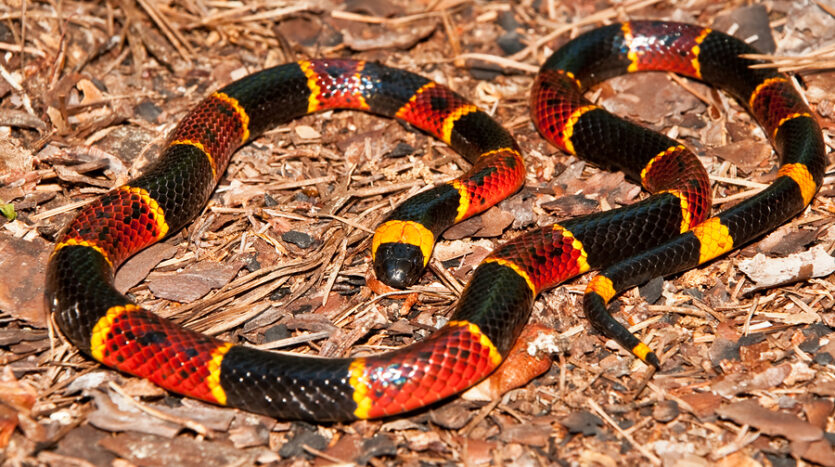9/15/17- The Venomous Snakes of AL



By Meaghan English, TrueSouth Properties Wildlife Specialist
Dove season is one of those seasons that all sportsmen look forward to. The weather is mild and the company is always good in the dove field! Unfortunately, the milder weather does not mean that “Joe No Shoulders” is laying low. The excessive rainfall has driven many snakes into unusual habitat and they are moving about. Please be on the lookout for Alabama’s 6 venomous snakes while shooting birds.
The first of the six is the infamous Water Moccasin or Cottonmouth. It is usually found in or around water and is a black to dark brown color. The body of this snake appears to be shorter and fatter than other venomous snakes. When this snake opens its mouth, it is solid white like a cotton ball (hints the name Cottonmouth). The young water moccasins have light green tails which is used to attract birds and other prey. When they flick their tails, the birds believe it is a worm and quickly meet their demise. The water moccasin/cottonmouth is one of the most aggressive snakes in Alabama and is very brazen. The second venomous snake is the Copperhead. It is usually found in much dryer areas and blends in very well with its surroundings. The key characteristic of a copperhead is the dark brown dumbbell shaped markings on its back. Because of its camouflage, this snake is stepped on by more humans than any other snake. In Alabama, pine straw makes the best habitat for a family of copperheads! Next is the timber rattler. If you have ever cruised or marked timber, you are very familiar with this creature! It dwells in the same areas as copperheads, but can even survive in places with a little more moisture. It can be identified by its “V” shaped markings down its back and the infamous rattling noise. Once the snake feels threatened, it begins to rattle its tail to warn its predators. The largest of the rattlesnakes is the Diamondback. This species can reach lengths of 8 feet and has diamonds down its back. It is a very large snake and occupies many different habitats. It is most commonly found in habitats that are shared with gopher tortoises because it uses gopher tortoise burrows for safety. If you have ever walked up on a coiled rattlesnake, chances are it was a Diamondback. They are ambush creatures! The fifth venomous snake in Alabama is the smallest rattlesnake; the pygmy. It definitely suffers from little man syndrome. This small rattlesnake is very quick to strike and show aggression. The size of this snake makes it very hard to hear its rattle, so it is quite sneaky. They only reach about 3 feet in length and the rattles are solid black (look like velvet). The sixth and final venomous snake is the coral snake. Everyone has heard the color rhyme “if red touches black, friend of jack; but if red touches yellow, kill a fellow”. Well that applies to this bad boy which is actually in the same family as cobras. This snake is actually quite calm and only attacks when it is handled or aggravated.
While you’re out and about in the dove field in the upcoming weeks, keep your eyes open for one of these guys. No need to kill, just simply mind your own business and they will do the same. Good luck out there and happy dove season!





